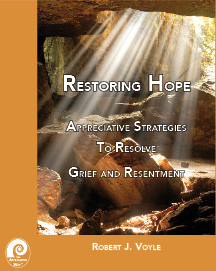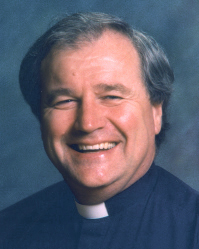

Restoring HopePractical Appreciative Inquiry based strategies to effectively resolve grief and resentment. Rob VoyleThe Rev. Dr. Rob Voyle is a leader in the development and use of appreciative inquiry in church and coaching settings. Rob's Approach to Training
>> See more on Rob's Stay ConnectedReceive The Appreciative Way our Free Email Newsletter Privacy: We never rent, sell, or share your email. |
Resolving Grief and Distress Following a Traumatic DeathOften grief is complicated by other factors such as the manner of a loved one's death, for example when their death is preceded by considerable pain and suffering. Discovering what is actually evoking distress when a client remembers their loved one is critical if we are to resolve the distress and restore the person to hope. In this video you will see Rob Voyle work with an actual client who is very tearful and distressed following the death of her mother several months earlier. The client cared for her mother at home while she died painfully of lung disease that caused her mother considerable choking and difficulty breathing. As you watch the video, see if you can identify the mistake Ronb makes in the first few minutes and ponder how you would have responded to the client Below the video is a brief commentary. I suggest you watch the video before reviewing the commentary.Strategies Used and Demonstrated in this Unedited Video
In the follow-up session 4 days later the "client" discusses the changes she has experienced.
Rob's Reflection on the SessionThis video taped session demonstrates the need to flexibly move through several processes and parts of the protocols that are outlined in Restoring Hope as we respond to the individual experiences of the specific client we are working with. My Big Mistake and its CorrectionIn the session I make a significant error in not identifying the specific trigger for the client's distress. While the client made several improvements, I was aware during the session that she continued to have significant levels of distress that I was unable to resolve. While viewing the recording after the session I realized that I had overlooked a specific and very simple trigger of the client's distress. Fortunately I was able to resolve the trigger in the follow-up session. As you view the video consider what you would do at each step and wonder what did I miss in the first few minutes of the session. |
|---|

